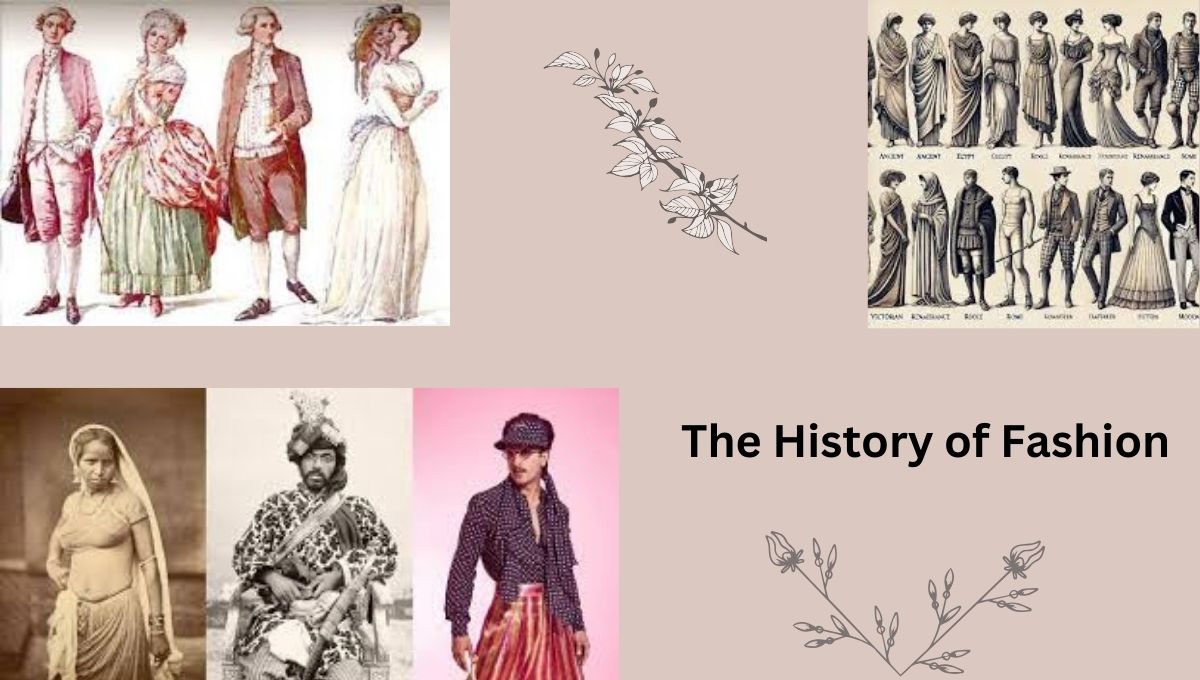The History of Fashion:Fashion is an ever-evolving phenomenon that reflects
cultural, social, and economic changes throughout history. Here’s a concise
overview of the history of fashion, highlighting some key periods and developments:
Ancient Civilizations
Fashion has been an integral part of human culture since ancient times.
In ancient Egypt, fashion was characterized by linen garments, elaborate
headdresses, and jewelry. Clothing was often adorned with intricate
patterns and vibrant colors . In ancient Greece and Rome, fashion focused
on draped garments such as the chiton and toga, which were made from wool or linen.
Medieval and Renaissance Periods
During the medieval period, clothing made from wool or linen. The Renaissance
period saw a revival of classical ideals, and fashion become ore extravagant.
Clothing was characterized by intricate embroidery, lace, and voluminous silhouettes.
The introduction of the codpiece, doublet, and farthingale were notable fashion
innovations of this time.
18th and 19th Centuries
The 18th century was marked by Rococo style, which featured elaborate decorations,
pastel colors, and ornate fabrics. Men’s fashion included powdered wigs, breeches,
and waistcoats, while women wore corsets, panniers, and elaborate gowns. The
French Revolution brought about a shift towards more practical and simple clothing,
with the emergence of the Neoclassical style.
The 19th century saw significant changes in fashion, with the Victorian era being a
notable period. Women’s fashion included corsets, crinolines, and bustles, creating
exaggerated silhouettes. Men’s fashion become more subdued, with frock coats,
waistcoats, and trousers becoming standard attire. The Industrial Revolution also
brought about advancements in textile production, making fashion more accessible to the masses.
20th Century
The 20th century was a period of rapid change and innovation in fashion. The early
1900s saw the rise of haute couture in Paris, with designers like Coco Chanel and Paul
Poiret revolutionizing women’s fashion. The flapper style of the 1920s brought shorter
hemlines, loose silhouettes, and a more relaxed attitude towards fashion. The 1940s and
1950s were marked by the influence of Hollywood, with glamorous styles and iconic looks
popularized by movie stars. The 1960s saw a youth-driven fashion revolution, with the
emergence of the mini skirt, mod style, and bold prints. The 1970s brought about the
hippie movement, with bohemian styles, bell-bottoms, and tie-dye becoming popular,
The1980sand 1990s saw the rise of various subcultures, each with its own distinct fashion
trends. punk goth and grunge styles emerged characterized by leather jackets ripped jeans
and band t-shirts. high fashion also saw the rise of power dressing with bold shoulders
structured silhouettes and designer labels becoming prominent.
21st Century
There has been a growing emphasis on sustainability and ethical fashion, with consumers becoming more conscious of the environmental impact of their clothing choices. Advances in technology have also influenced fashion, with the rise of e-commerce, social media, and wearable technology.
In recent years, there has been a revival of vintage styles, with designers drawing inspiration from past decades. Streetwear and athleisure have become dominant trends, blending comfort with style. Inclusivity and diversity have also become important themes in fashion, with brands embracing a wider range of body types, ethnicities, and gender identities.
